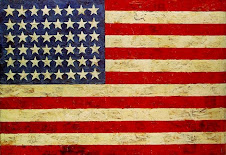US HISTORY MID YEAR FINAL REVIEW
Colonial Era
Influence of Enlightenment
Mayflower compact
Jamestown Settlement
House of Burgesses
Albany Plan of Union
Slave Trade
Mercantilism
Salutary Neglect
Taxation without Representation
Early forms of government
Articles of Confederation
Constitutional Convention
Virginia Plan
Great Compromise
3/5 Compromise
Ratification of Constitution
Federalist v. Anti-federalists
Federalist Papers
Bill of Rights
American Revolution
US Constitution
Popular Sovereignty
Separation of Powers
Checks and balances
Roles of each branch of government
Living document
Veto and override power
Elastic clause
Amendment process
Judicial interpretation and review
Unwritten constitution/ implied powers
Bill of Rights (know 1-10)
13th Amendment
14th Amendment
15th Amendment
Supreme Court Cases
Marbury v. Madison
Plessy v. Fergeuson
Dred Scott Case
Roe v. Wade
Brown v. Board of Ed.
Federalist Era
Proclamation of Neutrality: Monroe Doctrine
Hamilton’s financial reforms (national bank)
Alien and Sedition Acts
Federalist Party v. Democratic Republicans
Marshall Court
Technology: cotton gin, telegraph, railroads
Antebellum Era
War of 1812
Monroe Doctrine
American and Spoils systems
Indian Removal and Trail of Tears
Abolition Movement
Transcendentalism
Progressivism and reform
Seneca Falls and Women’s Rights Convention
Westward Expansion
Louisiana Purchase
Gold Rush
Oregon Trail
Gadsen Purchase
Mexican Cession
US- Mexican War
Missouri Compromise
Compromise of 1850
Kansas-Nebraska Act
Civil War
Causes: states rights, westward expansion, slavery
Secession
Lincoln-Douglas Debates
Emancipation Proclamation
Election of 1862
John Brown’s Raid
Lincoln’s assassination
Reconstruction
Tenure of Office Act
Black Codes
Jim Crow Laws
Ku Klux Clan
Johnson presidency
Impeachment of Johnson
Civil Rights Legislation (13-15 Amendments)
W.E.B. Du Bois
Booker T Washington
Monday, January 14, 2008
Monday, January 7, 2008
Civil War Newspapers: A pimary source investigation

Harper's Weekly was the most popular newspaper during the Civil War, and it featured stunning illustrations, and in depth stories on all the important people and events of the war. For this week's blog assignment, analyze and evalutate material from this important primary source following the directions below:
1. Actively read any issue from the online archive of Harpers' papers from 1861-65. (These papers are 4-6 pages long and include photographs and advertisements.) The papers are available for view at:http://www.sonofthesouth.net/leefoundation/the-civil-war.htm
2. Summarize two articles and/or cartoons related to the war published in this edition (be sure to indicate the date and page of each source.) What insight do these articles provide into the issues most important to Harper's Weekly readers at this time? What are the authors and/or artists' positions on the war?
3. Conclude by discussing the impact you believe papers like Harpers' Weekly had on the war.
This post is due by Friday, 1/11 at 7 a.m. 200 word minimum. Remember to respond to at least one classmates post.
http://www.sonofthesouth.net/leefoundation/the-civil-war.htm
Subscribe to:
Posts (Atom)
